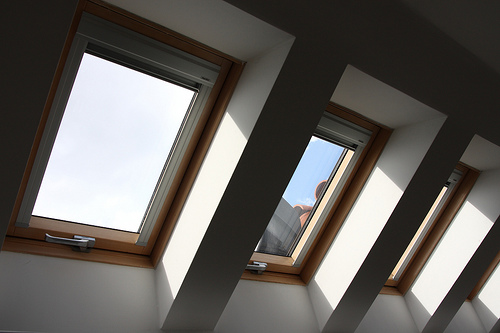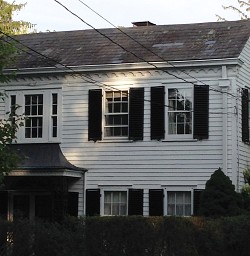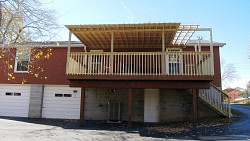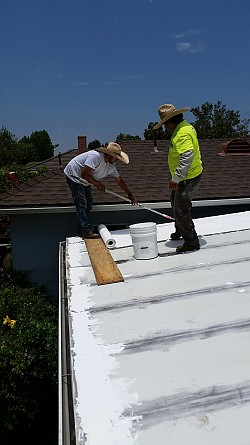Triage for Leaky Skylights
 Skylights are notorious for leaks, but they may have an undeservedly bad reputation. Of course, a skylight may leak through a poor weather seal or a crack in the glass. A leak may also be caused by user error if a high skylight is not completely closed.
Skylights are notorious for leaks, but they may have an undeservedly bad reputation. Of course, a skylight may leak through a poor weather seal or a crack in the glass. A leak may also be caused by user error if a high skylight is not completely closed.
However, experts say the installation may be to blame in the majority of cases, particularly with newer and higher quality skylights. If water seeps in during and after rainstorms, the flashing may be leaking. On the other hand, if the skylight seems to be leaking during cold weather, but not necessarily during rainstorms, the seeming leak may be a buildup of condensation caused by poor insulation around the skylight.
Instead of the usual quick skylight triage of patching gaps with caulk or tar, try these more permanent repairs when skylights are leaking.
Replace Flashing
Flashing is the metal or other material that surrounds the skylight and, hopefully, diverts water down and off the roof. Leaks can get in above the top flashing or at the side edge. A leak above the skylight may be caused by ice, snow or debris that blocks and pools water. The trapped water may eventually find its way into the house by backing up under the shingles or leaking through the edge or improperly sealed flashing.
Have a qualified skylight expert examine the flashing. If it leaks, it is probably time to replace the flashing rather than try any stopgap repairs.
The sides of skylights should be lined with properly installed step flashing. The common alternative is continuous side flashing, which relies on some type of sealant at the edge where the skylight meets the flashing. This edge is a common source of leaks.
Replace continuous side flashing with step flashing, which uses a series of overlapping solid metal pieces bent at right angles. The metal pieces are interwoven with the shingles, so rain washing down the sides of the skylight will wash out and away from the edges of the frame. There is no gap at the edge of the frame where water could be trapped.
At the top of the skylight, use a single, solid piece of head flashing. It should be under the shingles, but over the top row of step flashing. An additional wraparound shroud above the skylight will offer added protection from leaks. The bottom of the skylight should also be a solid metal piece, an apron that extends over the shingles below. All the flashing should be sealed to the roof with a thick coating of roofing cement.
Add Insulation
Again, the skylight may not actually be leaking at all. It may just be dripping with condensation that collects on cold days due to improper insulation. Remove the drywall around the skylight. You may not have enough — or any — insulation between the framing members and the skylight. The easiest solution is expanding spray foam.
Adding insulation and replacing flashing should keep skylights from springing leaks for many years.
Looking for a Pro? Call us (866) 441-6648

Related Experiences

Roof Inspection And Slate Shingle Replacement Exceed Expectations

New Stairs And Roof Installation Are The Perfect Deck Upgrade



